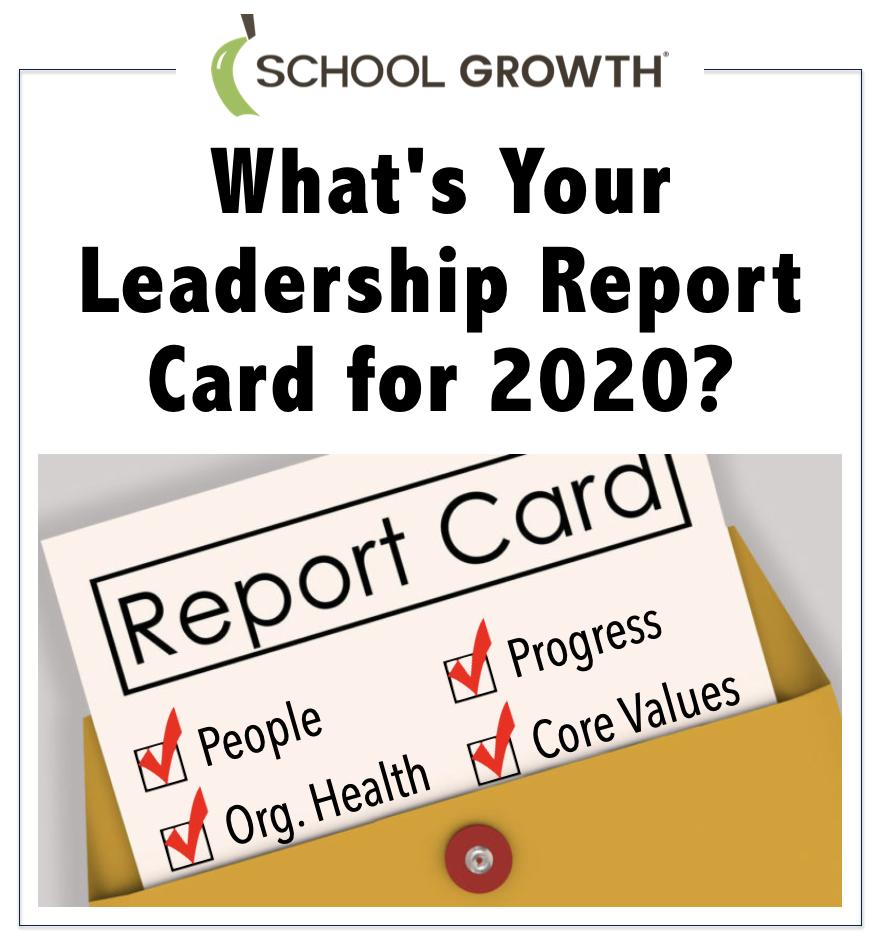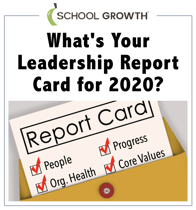
What's Your Leadership Report Card for 2020?
 What's your leadership report card for 2020 that will build confidence with your board, faculty, and families?
What's your leadership report card for 2020 that will build confidence with your board, faculty, and families?
Your communications about this year may say that you managed to survive--or you could demonstrate through the evidence of your data that you achieved your growth plan and are now ready to conquer 2021.
Reporting and assessment of school leadership performance remains surprisingly vague and subjective.
The typical pattern is that the board asks the head to submit a report or presentation about the school's achievements, lessons learned, and the goals for the upcoming year. Then the board solicits feedback from members in order to produce an evaluation of the head's leadership that includes a performance rating on some type of scale and recommendations for growth.
The theory here is that the board will somehow be able to assess the leadership's performance objectively and fairly, and then offer useful feedback for improvement. But anyone who has experienced such a disconnected evaluation process can speak to the inevitable biases and ambiguity that often do more harm than good.
Crafting an effective performance rubric for the administration:
1. Enables the board and head to first agree on the key performance indicators (KPIs) that will be used for assessment,
2. Reduces the risk of vagueness and biases, and
3. Contributes to higher energy and engagement.
Accountability without genuine relationship devolves into what amounts to bullying and dysfunctional behaviors. Unfortunately, that is too often the nature of the board/administrator cycle.
Research consistently shows that the vast majority of boards are ineffective at productive accountability measures, and nearly all administrators say that improving the accountability and feedback process is a critical board development need.
What KPIs should be included in the head's performance rubric? Below are seven KPIs that are core to an effective school leadership strategy and accountability:
Leadership Capacity
1. Mission and Core Values consistently clarified and enforced (Talent Quotient, Talent and Communication Performance)
2. Engagement level of faculty, parents, and students (Net Promoter Score, Participation, Surveys)
Organizational Health
3. Organizational Health Growth
4. School Culture Quality (e.g., Using Johns Hopkins University Institute for Education Policy School Culture 360™ Survey)
Continuous Improvement
5. Curriculum Quality (Independent Assessment, Observations)
6. Progress on Strategic and Tactical Plans (Project data from Growth Plan)
7. Achievement of Financial Objectives (Total Revenue, Net Tuition Revenue/Student, Cash Reserves, Budget Performance)
A performance report card that provides data evidence of growth in these seven areas is a powerful way to build credibility and confidence in the administrator's leadership.
School heads like Tom Hood at St. Agnes Academy-St. Dominic School, Donna Lemaire at St. Pius Elementary School, Rachel Deems at Spartanburg Day School, Brian Dougherty at Sherwood Christian Academy, and John Davis at Immanuel Christian School were able to deliver detailed results on their growth plans in 2020, and are ready to continue on their path to sustainable excellence.
So how about 2021? What will be on your leadership report card next year that will build confidence with your board, faculty, and families?

.png?width=1000&height=199&name=SG-Logo3-Transparent-1000x199px%20(1).png)




